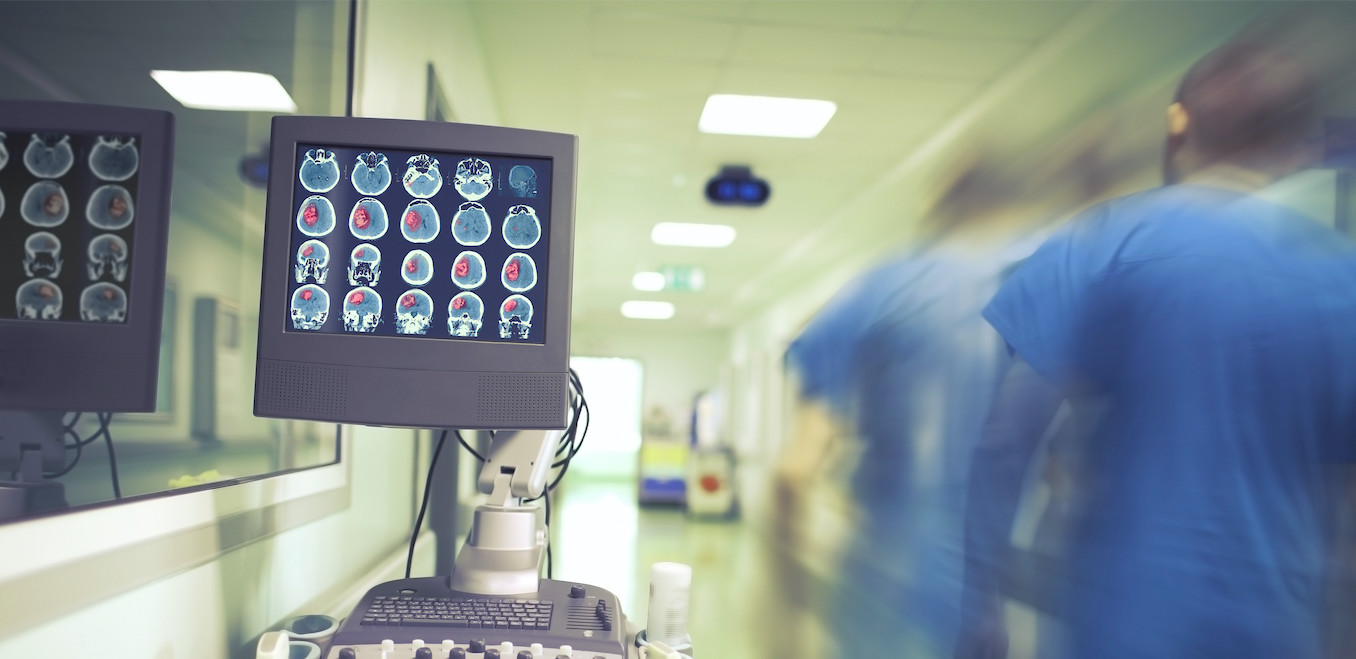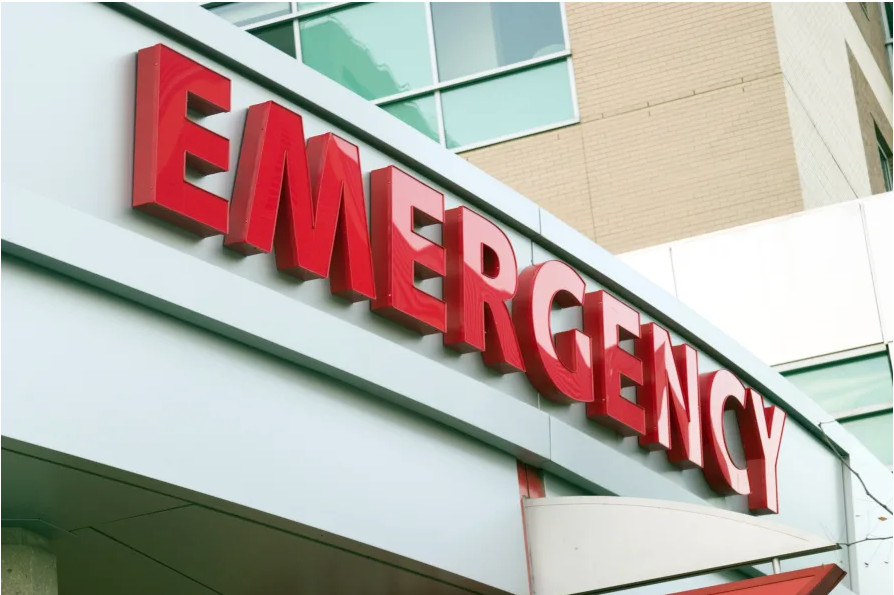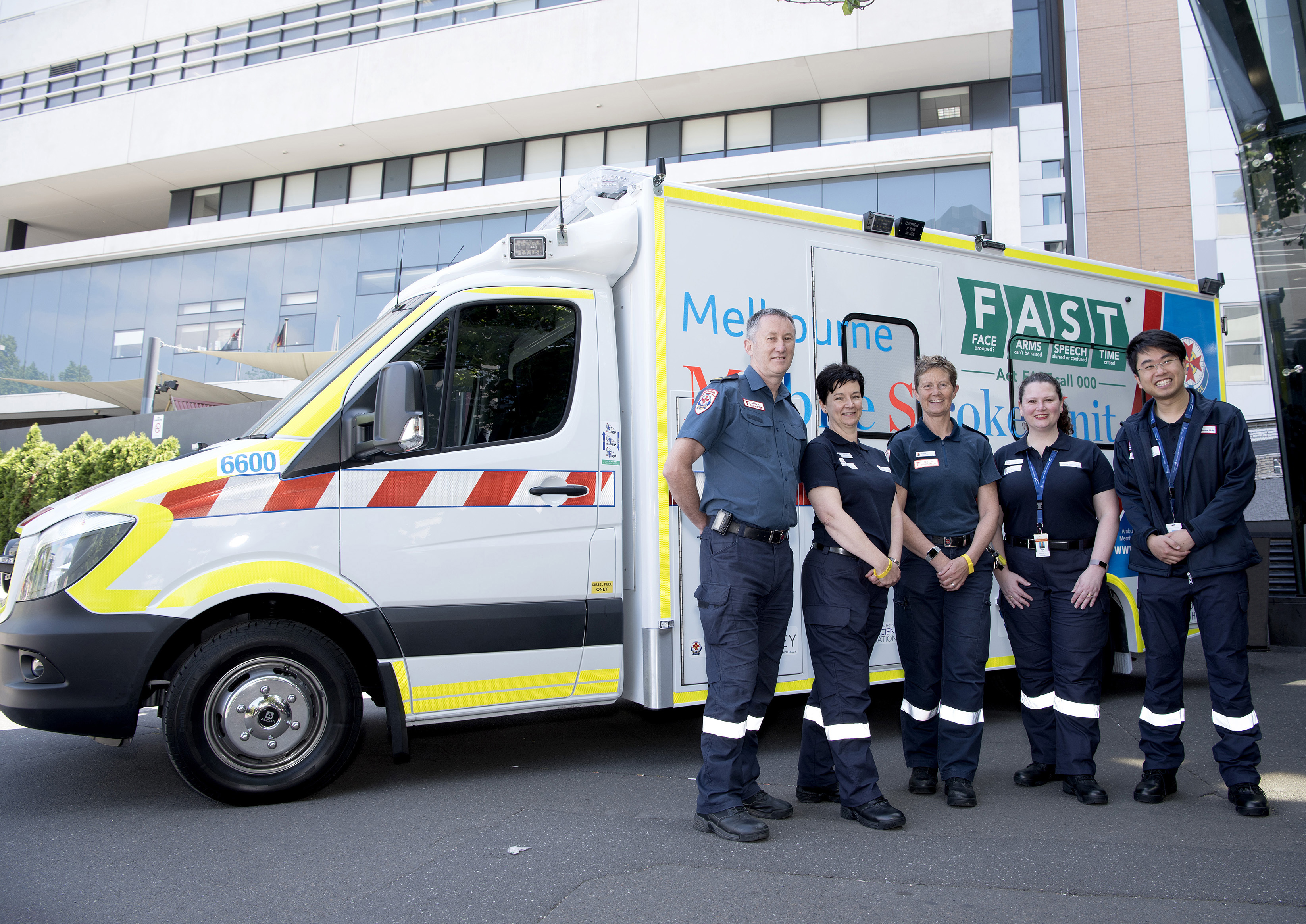
Health & Medicine
Space for re-learning after a stroke

COVID-19 has stimulated a re-engineering of the health system, sometimes bringing the Emergency Department to the patient. This approach is already benefiting early treatment of stroke
Published 9 July 2020
Clinicians say COVID-19 is delivering a double blow to patients at risk of or experiencing stroke, but also represents an opportunity to improve how health systems respond to patients needing time-critical care.
University of Melbourne Professors Geoffrey Donnan and Stephen Davis, founders of the Mobile Stroke Unit (MSU) at the Royal Melbourne Hospital (RMH), say that while stroke is highly preventable and treatable, it is still 10 times more fatal than the coronavirus.

The number of strokes in Australia is predicted to double between 2020 and 2050 by which time there will be a stroke every four minutes. The economic burden in 2050 is predicted to be $A60 billion.
They say the double hit is due to the virus’s direct impact on the patient’s circulatory system. But it also reflects the health system shocks wreaked by the pandemic, which seem to be causing a drop in the number of cases accessing hospitals globally.

Health & Medicine
Space for re-learning after a stroke
Professor Davis says evidence is emerging that COVID-19 has important effects on the blood as well as the respiratory system – even though its effects on breathing and the lungs are dramatic. Young people seem to be particularly affected.
“COVID-19 appears to make the blood stickier, and it can affect the large vessels supplying the brain in some young people, with inflammation of the large arteries, and clotting of the blood,” says Professor Davis.
“This has recently been reported by our colleague Dr Tom Oxley during the coronavirus pandemic in New York, in the New England Journal of Medicine. They routinely use blood thinning therapies in these young stroke cases with COVID-19 and have successfully used clot retrieval in some of them,” he says.
Professor Davis’ own team at the Royal Melbourne Hospital has witnessed a drop in mild stroke cases, which they suspect is due to people’s reluctance to go to hospital for fear of becoming infected with coronavirus.

“It’s a paradox, as we don’t think the stroke rate is going down but people’s attitudes to the hospital system have changed,” Professor Davis says.
“We are still seeing the more serious strokes, the large vessel occlusions, also the big bleeds in the brain, but less of the minor ones, or TIAs (transient ischemic attacks). It appears to be a worldwide trend, and we think there will be a price to pay.

Health & Medicine
Are declines in cardiovascular disease mortality ending?
Despite reduced demand for in-hospital stroke services, the Melbourne Mobile Stroke Unit is still treating patients at pre-pandemic levels. The only change is increased use of personal protective equipment, to mirror emergency department protocols.
Otherwise it’s business as usual; where the unit completes on-the-spot brain scans and administers acute therapies before taking patients to the most relevant centre for treatment.
The Mobile Stroke Unit – a modified ambulance with a CT scanner and a highly skilled stroke care team onboard – was founded to speed up stroke treatment in the so-called “golden hour” when early intervention is likely to dramatically improve patient outcomes.
In the two and a half years since its inception, it has been called to 3000 patients. Recent data shows the time to treatment has been reduced by 61 minutes and the stroke ambulance is highly cost effective.

Stroke is a massive global problem and the second leading cause of death, and perhaps one of the greatest causes of adult disability.
“The mortality rate for stroke is about 10 times higher than COVID-19. We know every minute counts, and if we can save time by bringing treatment to the patient, we can improve outcomes,” Professor Davis said.

Health & Medicine
Child stroke survivors have time on their side
Professor Donnan said while the mobile stroke unit was already at the forefront of change, COVID-19 has rapidly accelerated transformation in the delivery of healthcare.
Professor Davis said the crisis created a real opportunity to tackle some of the biggest health anomalies in Australia, where geography adversely affects patient outcomes.
“COVID-19 has stimulated a reengineering of the health system, where we bring the Emergency Department to the patient, wherever they are,” says Professor Davis.
Developing internationally unique lightweight scanning equipment for the air or road will enable early treatment and better outcomes in stroke, regardless of geography,” he says.
The team has completed economic modelling, associated with expanding the mobile stroke unit beyond the Melbourne CBD to serve all Australians, via the installation of lightweight scanning technology, under development, in planes, helicopters and standard road ambulances.
“We see our program as a great solution for Australia, as there is a huge rural remote Indigenous treatment gap, where if you live in the Outback, you can’t access modern stoke treatment and you are more likely to be left with a severe disability,” he says.
“We have estimated over a 30-year period we would save up to $A15-$A20 billion with our approach and, therefore, a lot of these changes in stroke care are highly cost-effective,” Professor Donnan says.
Banner: Shutterstock